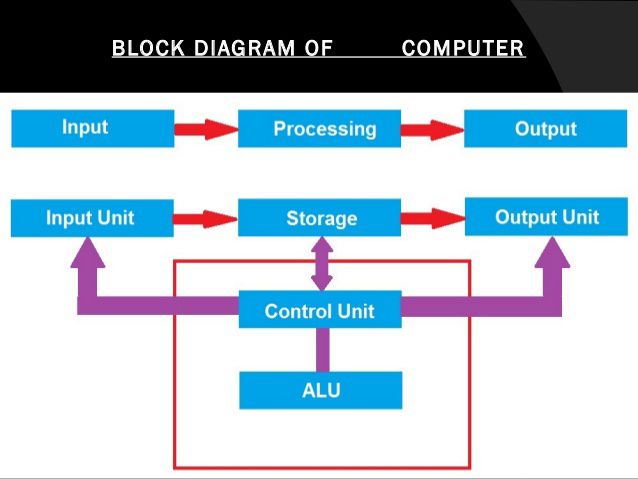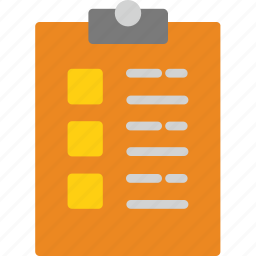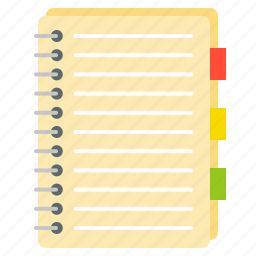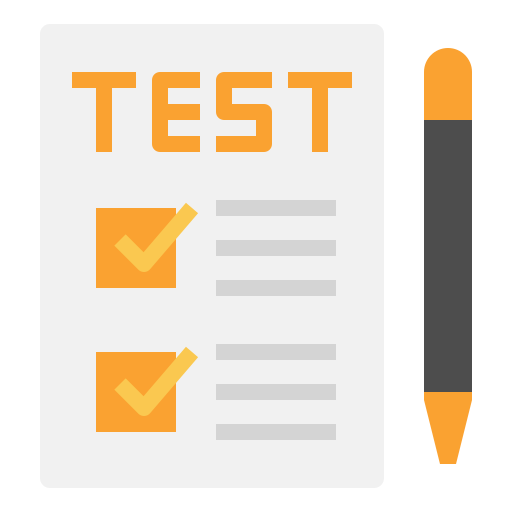What is a Computer?
A computer is a group of electronic and mechanical devices that can perform various operations on the data (input, processing, storage) in accordance with a given set of instructions to produce useful results or information. The unprocessed or the raw facts are called data, whereas processed and meaningful facts are termed as information.

Functioning of a Computer System
A computer can store, process and retrieve data as and when desired. The fact that a computer processes data is so fundamental that it is rightly called a Data Processor.
A computer has four functions:
- Accepts data Input
- Processes data Processing
- Produces output Output
- Stores results Storage
Input (Data): Input is the raw information which is entered into a computer from the input devices. It is basically the collection of letters, images and numbers etc.
Process: Process is the operation of data as per the given instruction. It is totally internal process of the computer system.
Output: Output is the processed data given by computer after data processing is completed. Output is also known as the result. Even, these results can be stored for further use.
Organization of a Computer
To perform the subtasks of input, processing and output various devices are used. The computer system can be broadly divided into following parts:
- The Input Unit
Various input devices are keyboards, mouse, joysticks, etc.
- The Central Processing Unit
Further divided into;
Arithmetic Logic Unit and Control Unit
- The Storage Unit
Classified as;
Primary Memory/Internal Memory as;
- RAM (Random Access Memory)
- ROM (Read Only Memory)
And, Secondary/External Memory as;
- Floppy discs
- Hard discs, etc.
- The Output Unit
Various output devices are Monitor (VDU), Printer, etc.
Questions
- What is a computer?
- What is a data?
- What is an information?
- What are the basic functions of a computer?
- Explain the organization of the computer. In brief.
- Name the two parts that make the central processing unit.
- Name some input and output devices.
Types of Computers
Computers can be classified according to size and storage capacity.
- Microcomputers
- Minicomputers
- Mainframes
- Supercomputers
Microcomputers:
- Developed in early 1980s.
- Versatile and relatively cheap
- A complete computer on a smaller scale
Minicomputers:
- Larger in size (Intermediate size between microcomputers and mainframe).
- Have greater storage capacity
- Operate at a high speed
- Used for general business applications; data processing needs.
Mainframes:
- Large computer
- Manufactured for commercial applications of large-scale businesses
- Expensive
- They are also used in a network.
- Examples of mainframes are IBM 3090, Cyber 170, IBM 4318.
Supercomputers:
- Fastest and the most expensive computer
- Used for performing trillions of complex calculations in a very short time.
- Main use is for weather forecasting, space exploration, etc.
The various characteristics of the computer that has made them indispensable are:
- Speed: A computer is a very fast device. Extremely complex operations on the data can be carried out. The units which we use to describe the working of a computer are millisecond (10-3seconds), microseconds (10-6 seconds), nanoseconds (10-9 seconds) and picoseconds (10-12 seconds). The speed of the computer is also measured in terms of FLOPS (Floating Point Operations Per Second) and MITS (Million Instructions Per Second).
- Accuracy: The accuracy of the computer is high. If any discrepancy occurs, it is due to human error or malfunctioning of hardware.
- Storage Capacity: A large volume of information can be stored in the memory of the computer.
- Diligence: A computer is free from the problems of tiredness, monotony and lack of concentration. It can work for long hours at a stretch without making any error.
- Versatility: A computer can be used for varied tasks efficiently.
Questions
- Explain the types of computer. In brief.
- Write the characteristics of the computer. Explain briefly.
Generation of Computer
First Generation (1940-56)
The first generation computers used vacuum tubes & machine language was used for giving the instructions. These computers were large in size & their programming was a difficult task. The electricity consumption was very high.
Some computers of this generation are ENIAC, EDVAC, EDSAC & UNIVAC-1.
Second Generation (1956-63)
In 2nd generation computers, vacuum tubes were replaced by transistors. They required only 1/10 of power required by tubes. This generation computer generated less heat and was reliable. The first operating system developed in this generation.
The Third Generation (1964-71)
The 3rd generation computers replaced transistors with an Integrated circuit known as chips. Small scale integrated circuits which had 10 transistors per chip, a technology developed to MSI circuits with 100 transistors per chip. These computers were smaller, faster and more reliable. High-level languages invented in this generation.
The Fourth Generation (1972- 2010)
LSI (Large scale Integrated) and VLSI (Very large scale integrated) were used in this generation. As a result, microprocessors came into existence. The computers using this technology known to be Micro Computers. High capacity hard disk was invented. There is a great development in data communication.
The Fifth Generation (2011 - present)
Fifth generation computing devices, based on artificial intelligence, are still in development, though there are some applications, such as voice recognition, that is being used today. The day is not far when artificial intelligence will become a reality with the help of parallel processing and superconductors. Quantum computation and molecular and nanotechnology will radically change the face of computers in years to come.
Areas of Applications
The reduction in cost and size has led to an increase in the applications of computers for the benefit of the common man. Some of the areas are;
- In Business
- At Home
- Communicating across the world
- In Education
- In Research
- In Defence
- In Police and Security Departments
- n Virtual Training
- In Medicine and Healthcare, etc.
Shortcomings of Computers
As you are aware, the computer is a device invented by human beings to render work easier. However, it suffers from the following shortcomings;
- Lack of IQ
It doesn’t have the intelligence of its own. It can perform tasks given to it with great speed and accuracy, but it needs instructions at each step.
- Lack of decision making power
It cannot make decisions on its own. It lacks this power.
- Lack of heuristics
It cannot learn from previous experiences. An occurrence of any error is repeated again and again, if not corrected by the user.
Questions
- Explain the generations of computer.
- Mention areas of application of computers.
- Write about the shortcomings of a computer.
Recap
- A Computer is a group of electronic and mechanical devices that can perform various operations on data in accordance with a set of instructions.
- Data is the term for raw facts. The processed data is the information.
- High speed, accuracy, versatility, large storage capacity, diligence – are the characteristics of a computer.
- Computer and its applications.
- The computer can be classified according to their size and the technology used in them.
- A computer lacks decision making power, IQ and heuristics.


























